SLASEE2 February 2018 DAC8771
PRODUCTION DATA.
- 1 Features
- 2 Applications
- 3 Description
- 4 Revision History
- 5 Device Comparison Table
- 6 Pin Configuration and Functions
- 7 Specifications
-
8 Detailed Description
- 8.1 Overview
- 8.2 Functional Block Diagram
- 8.3
Feature Description
- 8.3.1 Current Output Stage
- 8.3.2 Voltage Output Stage
- 8.3.3 Buck-Boost Converter
- 8.3.4 Analog Power Supply
- 8.3.5 Digital Power Supply
- 8.3.6 Internal Reference
- 8.3.7 Power-On-Reset
- 8.3.8 ALARM Pin
- 8.3.9 Power GOOD bit
- 8.3.10 Status Register
- 8.3.11 Status Mask
- 8.3.12 Alarm Action
- 8.3.13 Watchdog Timer
- 8.3.14 Programmable Slew Rate
- 8.3.15 HART Interface
- 8.4 Device Functional Modes
- 8.5
Register Maps
- 8.5.1
Register Maps
- 8.5.1.1 DAC8771 Commands
- 8.5.1.2
Register Maps and Bit Functions
- 8.5.1.2.1 No Operation Register (address = 0x00) [reset = 0x0000]
- 8.5.1.2.2 Reset Register (address = 0x01) [reset = 0x0000]
- 8.5.1.2.3 Reset Config Register (address = 0x02) [reset = 0x0000]
- 8.5.1.2.4 Select DAC Register (address = 0x03) [reset = 0x0000]
- 8.5.1.2.5 Configuration DAC Register (address = 0x04) [reset = 0x0000]
- 8.5.1.2.6 DAC Data Register (address = 0x05) [reset = 0x0000]
- 8.5.1.2.7 Select Buck-Boost Converter Register (address = 0x06) [reset = 0x0000]
- 8.5.1.2.8 Configuration Buck-Boost Register (address = 0x07) [reset = 0x0000]
- 8.5.1.2.9 DAC Channel Calibration Enable Register (address = 0x08) [reset = 0x0000]
- 8.5.1.2.10 DAC Channel Gain Calibration Register (address = 0x09) [reset = 0x0000]
- 8.5.1.2.11 DAC Channel Offset Calibration Register (address = 0x0A) [reset = 0x0000]
- 8.5.1.2.12 Status Register (address = 0x0B) [reset = 0x1000]
- 8.5.1.2.13 Status Mask Register (address = 0x0C) [reset = 0x0000]
- 8.5.1.2.14 Alarm Action Register (address = 0x0D) [reset = 0x0000]
- 8.5.1.2.15 User Alarm Code Register (address = 0x0E) [reset = 0x0000]
- 8.5.1.2.16 Reserved Register (address = 0x0F) [reset = N/A]
- 8.5.1.2.17 Write Watchdog Timer Register (address = 0x10) [reset = 0x0000]
- 8.5.1.2.18 Reserved Register (address 0x12 - 0xFF) [reset = N/A]
- 8.5.1
Register Maps
- 9 Application and Implementation
- 10Power Supply Recommendations
- 11Layout
- 12Device and Documentation Support
- 13Mechanical, Packaging, and Orderable Information
Package Options
Mechanical Data (Package|Pins)
- RGZ|48
Thermal pad, mechanical data (Package|Pins)
- RGZ|48
Orderable Information
7.7 Typical Characteristics
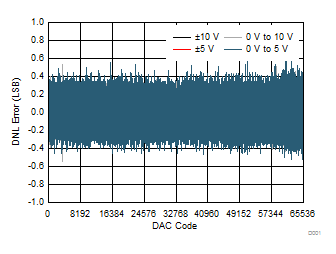 Figure 3. VOUT DNL vs Code (DC/DC Enabled)
Figure 3. VOUT DNL vs Code (DC/DC Enabled)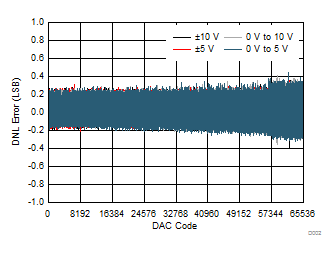 Figure 5. VOUT DNL vs Code (DC/DC Disabled)
Figure 5. VOUT DNL vs Code (DC/DC Disabled)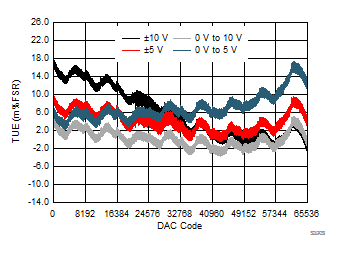 Figure 7. VOUT TUE vs Code (DC/DC Enabled)
Figure 7. VOUT TUE vs Code (DC/DC Enabled)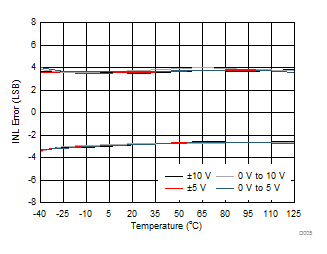 Figure 9. VOUT INL vs Temperature
Figure 9. VOUT INL vs Temperature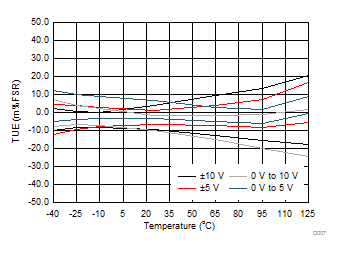 Figure 11. VOUT TUE vs Temperature
Figure 11. VOUT TUE vs Temperature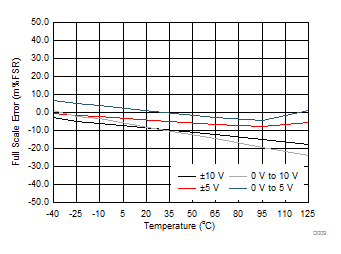 Figure 13. VOUT Full-Scale Error vs Temperature
Figure 13. VOUT Full-Scale Error vs Temperature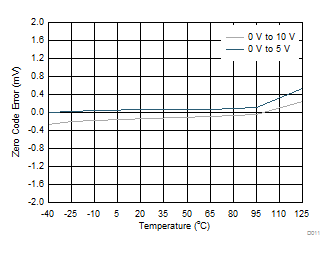 Figure 15. VOUT Zero-Code Error vs Temperature
Figure 15. VOUT Zero-Code Error vs Temperature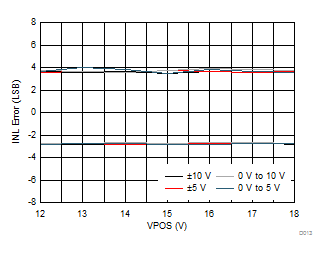 Figure 17. VOUT INL vs VPOS
Figure 17. VOUT INL vs VPOS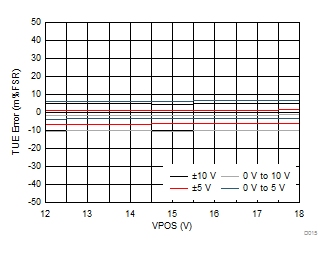 Figure 19. VOUT TUE vs VPOS
Figure 19. VOUT TUE vs VPOS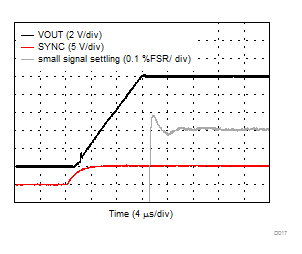 Figure 21. VOUT Settling Time, Rising Signal
Figure 21. VOUT Settling Time, Rising Signal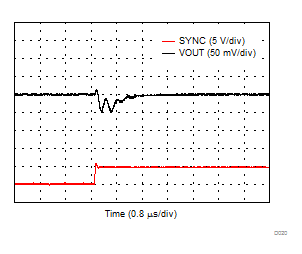 Figure 23. VOUT Major-Carry Glitch, Positive
Figure 23. VOUT Major-Carry Glitch, Positive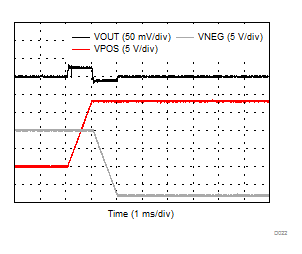 Figure 25. VOUT Power-On Glitch
Figure 25. VOUT Power-On Glitch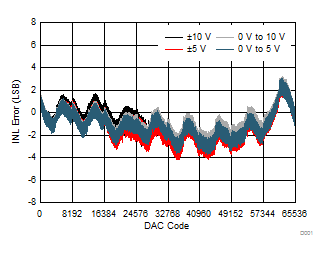 Figure 4. VOUT INL vs Code (DC/DC Enabled)
Figure 4. VOUT INL vs Code (DC/DC Enabled)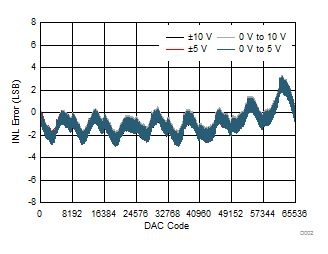 Figure 6. VOUT INL vs Code (DC/DC Disabled)
Figure 6. VOUT INL vs Code (DC/DC Disabled)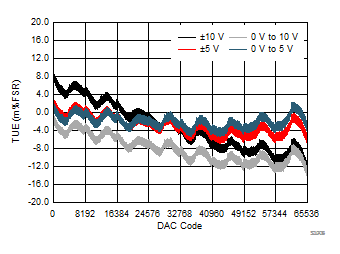 Figure 8. VOUT TUE vs Code (DC/DC Disabled)
Figure 8. VOUT TUE vs Code (DC/DC Disabled)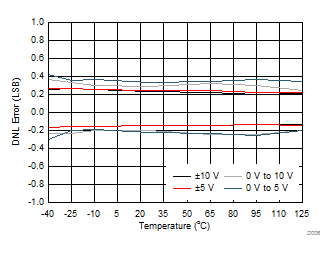 Figure 10. VOUT DNL vs Temperature
Figure 10. VOUT DNL vs Temperature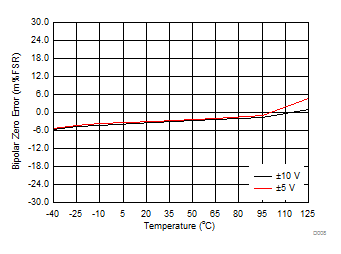 Figure 12. VOUT Bipolar Zero Error vs Temperature
Figure 12. VOUT Bipolar Zero Error vs Temperature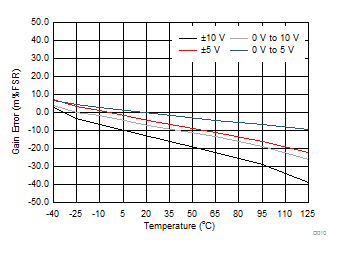 Figure 14. VOUT Gain Error vs Temperature
Figure 14. VOUT Gain Error vs Temperature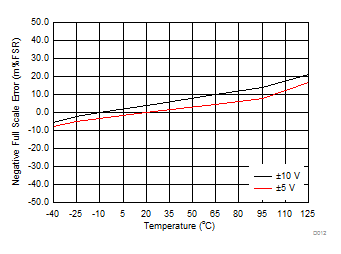 Figure 16. VOUT Negative Full-Scale Error vs Temperature
Figure 16. VOUT Negative Full-Scale Error vs Temperature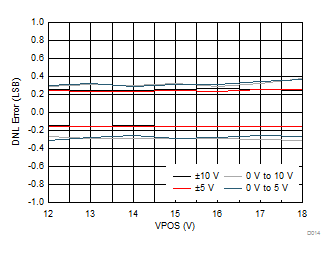 Figure 18. VOUT DNL vs VPOS
Figure 18. VOUT DNL vs VPOS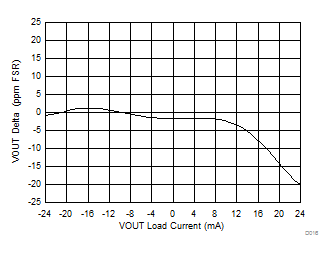 Figure 20. VOUT Load Regulation (SCLM = 11)
Figure 20. VOUT Load Regulation (SCLM = 11)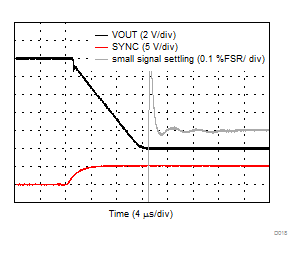 Figure 22. VOUT Settling Time, Falling Signal
Figure 22. VOUT Settling Time, Falling Signal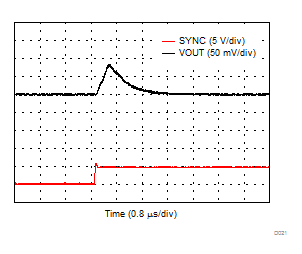 Figure 24. VOUT Major-Carry Glitch, Negative
Figure 24. VOUT Major-Carry Glitch, Negative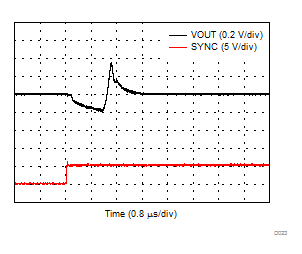 Figure 26. VOUT Output-Enable Glitch
Figure 26. VOUT Output-Enable Glitch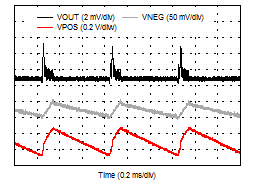 Figure 28. VOUT DC/DC Ripple (50kHz First-Order Low-Pass Filter)
Figure 28. VOUT DC/DC Ripple (50kHz First-Order Low-Pass Filter)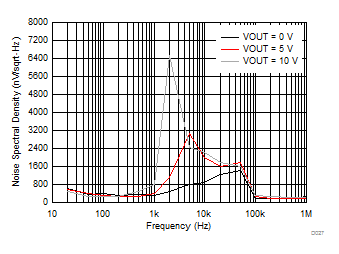 Figure 30. VOUT Noise Spectral Density (DC/DC Enabled)
Figure 30. VOUT Noise Spectral Density (DC/DC Enabled)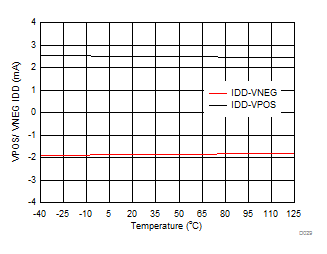 Figure 32. VOUT Quiescent Current vs Temperature (No Load)
Figure 32. VOUT Quiescent Current vs Temperature (No Load)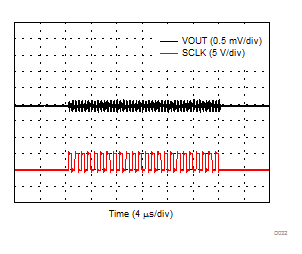 Figure 34. VOUT Digital Feedthrough
Figure 34. VOUT Digital Feedthrough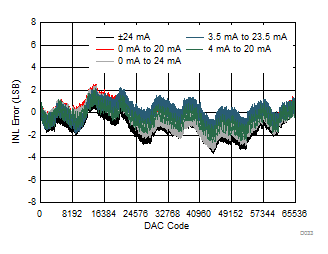 Figure 36. IOUT INL vs Code (DC/DC Enabled)
Figure 36. IOUT INL vs Code (DC/DC Enabled)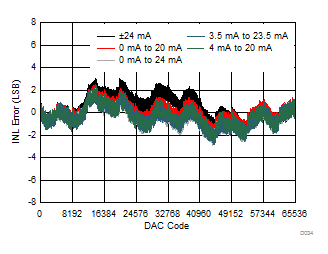 Figure 38. IOUT INL vs Code (DC/DC Disabled)
Figure 38. IOUT INL vs Code (DC/DC Disabled)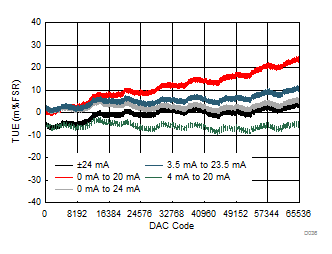 Figure 40. IOUT TUE vs Code (DC/DC Enabled)
Figure 40. IOUT TUE vs Code (DC/DC Enabled)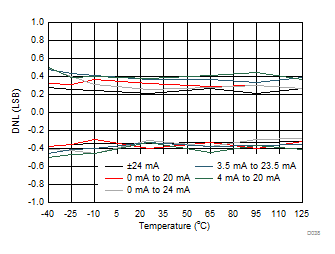 Figure 42. IOUT DNL vs Temperature
Figure 42. IOUT DNL vs Temperature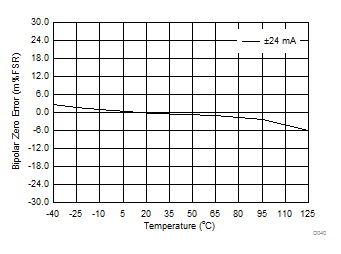 Figure 44. IOUT Bipolar Zero Error vs Temperature
Figure 44. IOUT Bipolar Zero Error vs Temperature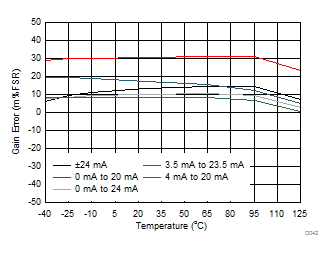 Figure 46. IOUT Gain Error vs Temperature
Figure 46. IOUT Gain Error vs Temperature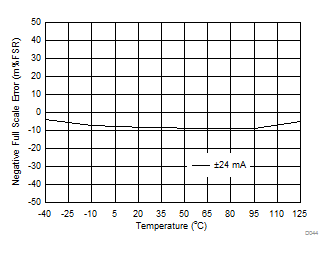 Figure 48. IOUT Negative Full-Scale Error vs Temperature
Figure 48. IOUT Negative Full-Scale Error vs Temperature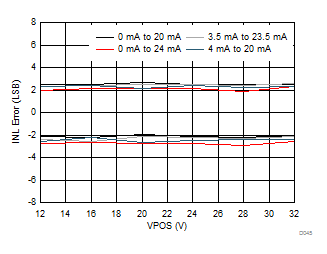 Figure 50. IOUT Unipolar Ranges INL vs VPOS
Figure 50. IOUT Unipolar Ranges INL vs VPOS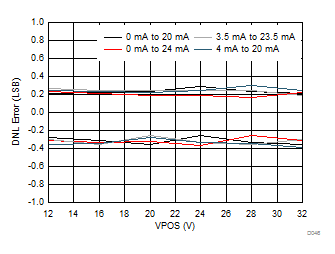 Figure 52. IOUT Unipolar Ranges DNL vs VPOS
Figure 52. IOUT Unipolar Ranges DNL vs VPOS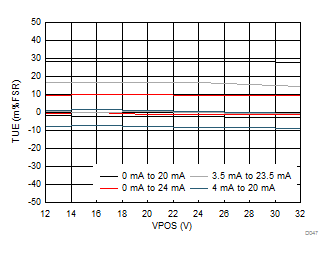 Figure 54. IOUT Unipolar Ranges TUE vs VPOS
Figure 54. IOUT Unipolar Ranges TUE vs VPOS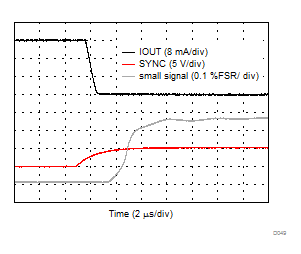 Figure 56. IOUT Settling Time, Falling Signal
Figure 56. IOUT Settling Time, Falling Signal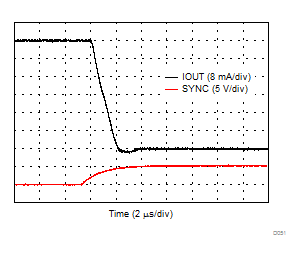 Figure 58. IOUT Settling Time, Bipolar Range, Falling Signal
Figure 58. IOUT Settling Time, Bipolar Range, Falling Signal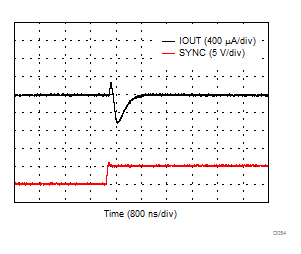 Figure 60. IOUT Major Carry Glitch, Negative
Figure 60. IOUT Major Carry Glitch, Negative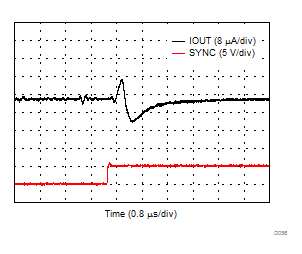 Figure 62. IOUT Output Enable Glitch
Figure 62. IOUT Output Enable Glitch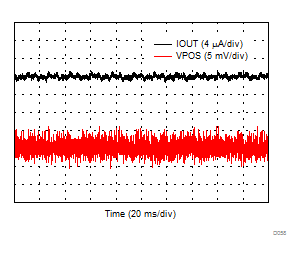 Figure 64. IOUT DC/DC Ripple (50kHz First-Order Low-Pass Filter)
Figure 64. IOUT DC/DC Ripple (50kHz First-Order Low-Pass Filter)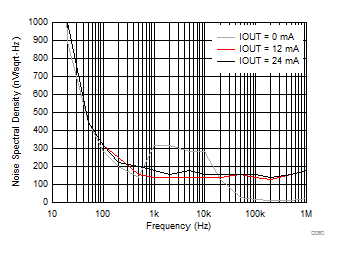 Figure 66. IOUT Noise Spectral Density (DC/DC Enabled)
Figure 66. IOUT Noise Spectral Density (DC/DC Enabled)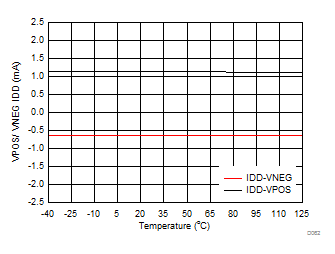 Figure 68. IOUT Quiescent Current vs Temperature
Figure 68. IOUT Quiescent Current vs Temperature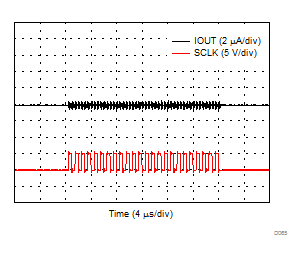 Figure 70. IOUT Digital Feed-Through
Figure 70. IOUT Digital Feed-Through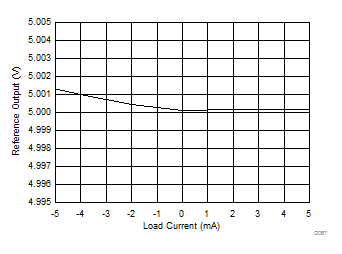 Figure 72. Internal Reference Voltage vs Load
Figure 72. Internal Reference Voltage vs Load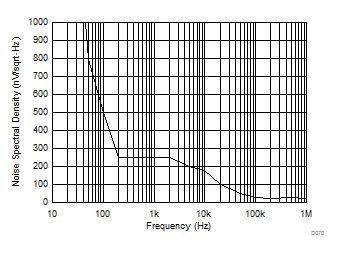 Figure 74. Internal Reference Voltage Noise Spectral Density (DC/DC Disabled)
Figure 74. Internal Reference Voltage Noise Spectral Density (DC/DC Disabled)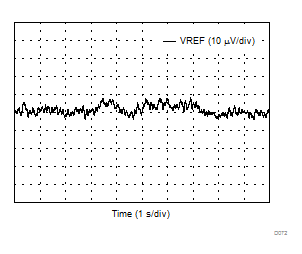 Figure 76. Internal Reference Voltage Noise (DC/DC Disabled)
Figure 76. Internal Reference Voltage Noise (DC/DC Disabled)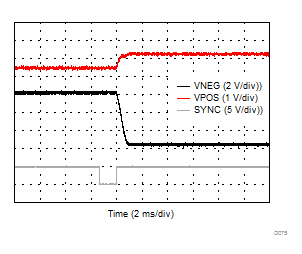 Figure 78. VPOS & VNEG Enable Settling Time
Figure 78. VPOS & VNEG Enable Settling Time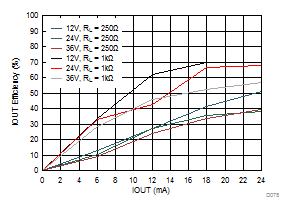 Figure 80. IOUT DC/DC Efficiency
Figure 80. IOUT DC/DC Efficiency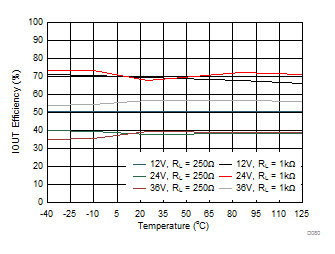 Figure 82. IOUT DC/DC Efficiency vs Temperature
Figure 82. IOUT DC/DC Efficiency vs Temperature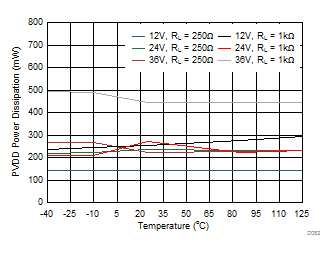 Figure 84. IOUT Power Dissipation vs Temperature
Figure 84. IOUT Power Dissipation vs Temperature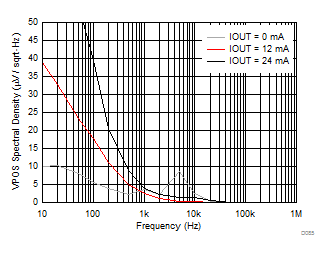 Figure 86. IOUT VPOS Noise Spectral Density
Figure 86. IOUT VPOS Noise Spectral Density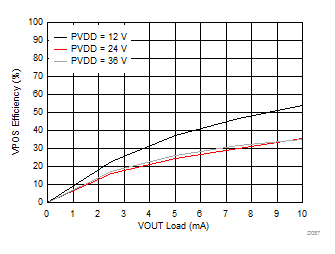 Figure 88. VOUT VPOS Efficiency vs Load
Figure 88. VOUT VPOS Efficiency vs Load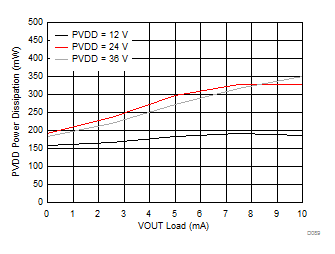 Figure 90. VOUT Power Dissipation vs Load
Figure 90. VOUT Power Dissipation vs Load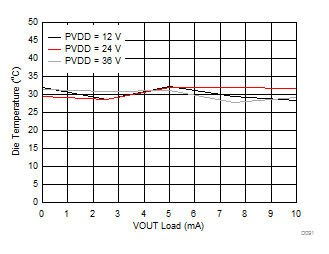 Figure 92. VOUT Die Temperature vs Load
Figure 92. VOUT Die Temperature vs Load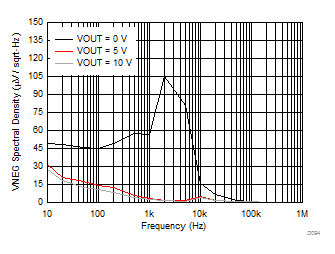 Figure 94. VPOS VNEG Noise Spectral Density
Figure 94. VPOS VNEG Noise Spectral Density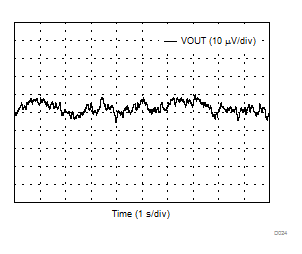 Figure 27. VOUT Noise (DC/DC Disabled)
Figure 27. VOUT Noise (DC/DC Disabled)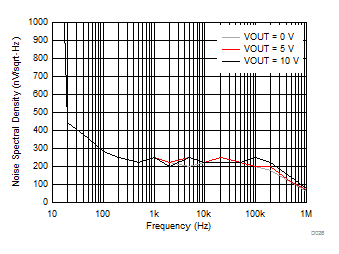 Figure 29. VOUT Noise Spectral Density (DC/DC Disabled)
Figure 29. VOUT Noise Spectral Density (DC/DC Disabled)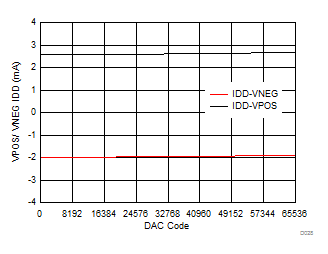 Figure 31. VOUT Quiescent Current vs Code (No Load)
Figure 31. VOUT Quiescent Current vs Code (No Load)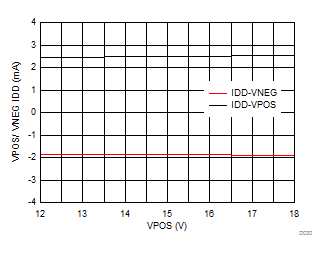 Figure 33. VOUT Quiescent Current vs VPOS (No Load)
Figure 33. VOUT Quiescent Current vs VPOS (No Load)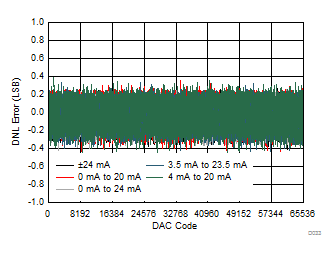 Figure 35. IOUT DNL vs Code (DC/DC Enabled)
Figure 35. IOUT DNL vs Code (DC/DC Enabled)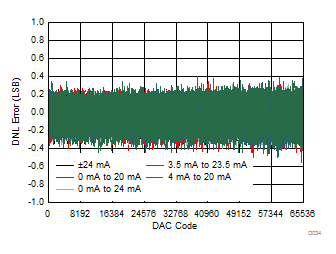 Figure 37. IOUT DNL vs Code (DC/DC Disabled)
Figure 37. IOUT DNL vs Code (DC/DC Disabled)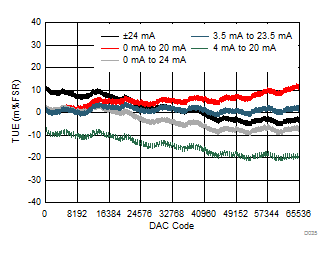 Figure 39. IOUT TUE vs Code (DC/DC Enabled)
Figure 39. IOUT TUE vs Code (DC/DC Enabled)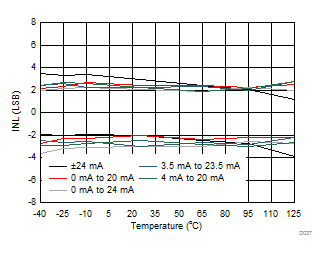 Figure 41. IOUT INL vs Temperature
Figure 41. IOUT INL vs Temperature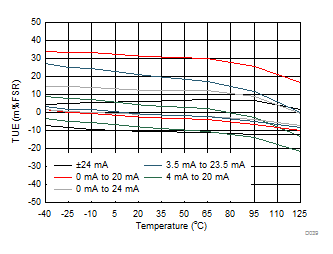 Figure 43. IOUT TUE vs Temperature
Figure 43. IOUT TUE vs Temperature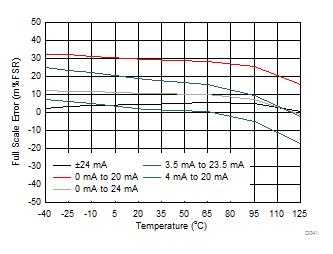 Figure 45. IOUT Full-Scale Error vs Temperature
Figure 45. IOUT Full-Scale Error vs Temperature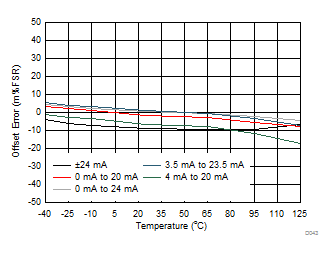 Figure 47. IOUT Offset Error vs Temperature
Figure 47. IOUT Offset Error vs Temperature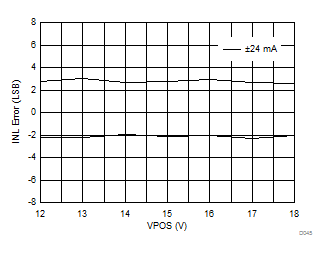 Figure 49. IOUT Bipolar Range INL vs VPOS
Figure 49. IOUT Bipolar Range INL vs VPOS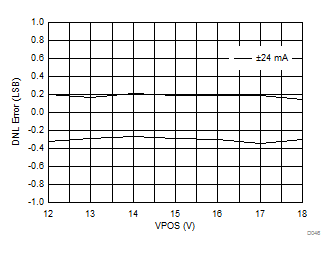 Figure 51. IOUT Bipolar Range DNL vs VPOS
Figure 51. IOUT Bipolar Range DNL vs VPOS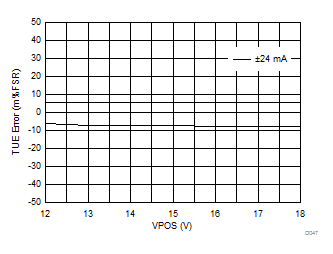 Figure 53. IOUT Bipolar Range TUE vs VPOS
Figure 53. IOUT Bipolar Range TUE vs VPOS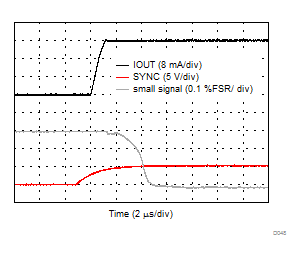 Figure 55. IOUT Settling Time, Rising Signal
Figure 55. IOUT Settling Time, Rising Signal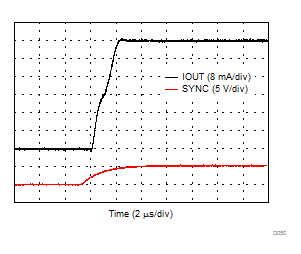 Figure 57. IOUT Settling Time, Bipolar Range, Rising Signal
Figure 57. IOUT Settling Time, Bipolar Range, Rising Signal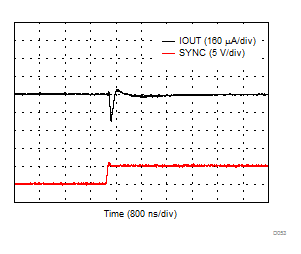 Figure 59. IOUT Major Carry Glitch, Positive
Figure 59. IOUT Major Carry Glitch, Positive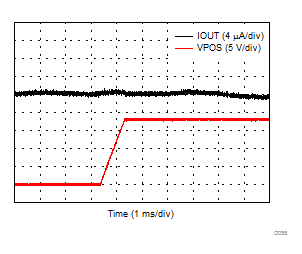 Figure 61. IOUT Power On Glitch
Figure 61. IOUT Power On Glitch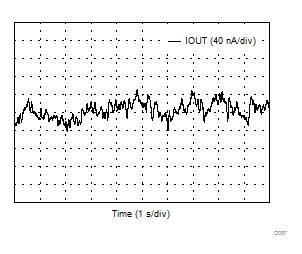 Figure 63. IOUT Noise (DC/DC Disabled)
Figure 63. IOUT Noise (DC/DC Disabled)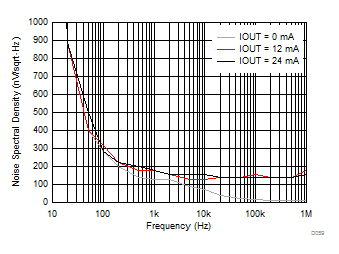 Figure 65. IOUT Noise Spectral Density (DC/DC Disabled)
Figure 65. IOUT Noise Spectral Density (DC/DC Disabled)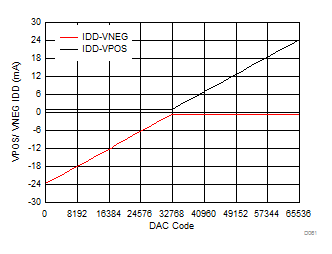 Figure 67. IOUT Quiescent Current vs Code, Bipolar Range
Figure 67. IOUT Quiescent Current vs Code, Bipolar Range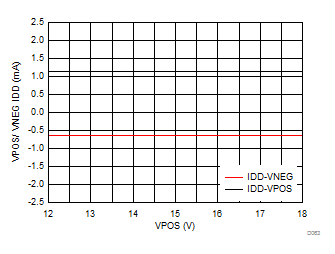 Figure 69. IOUT Quiescent Current vs VPOS
Figure 69. IOUT Quiescent Current vs VPOS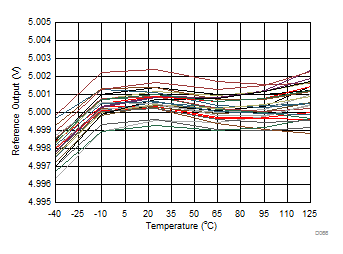 Figure 71. Internal Reference Voltage vs Temperature
Figure 71. Internal Reference Voltage vs Temperature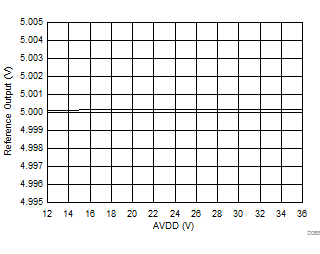 Figure 73. Internal Reference Voltage vs AVDD
Figure 73. Internal Reference Voltage vs AVDD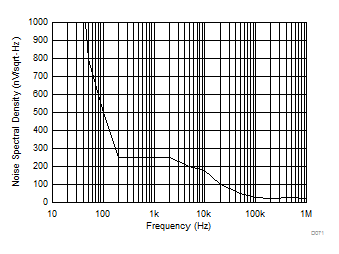 Figure 75. Internal Reference Voltage Noise Spectral Density (DC/DC Enabled)
Figure 75. Internal Reference Voltage Noise Spectral Density (DC/DC Enabled)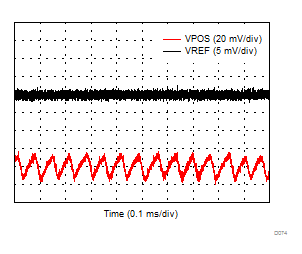 Figure 77. Internal Reference Voltage DC/DC Ripple
Figure 77. Internal Reference Voltage DC/DC Ripple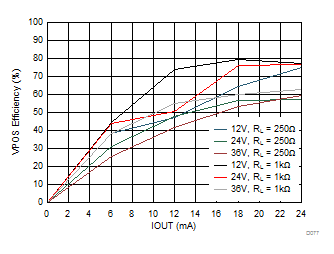 Figure 79. IOUT VPOS Efficiency
Figure 79. IOUT VPOS Efficiency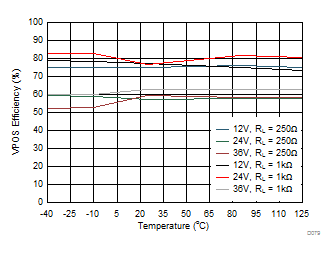 Figure 81. VPOS Efficiency vs Temperature
Figure 81. VPOS Efficiency vs Temperature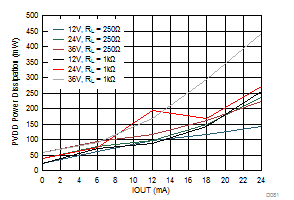 Figure 83. IOUT Power Dissipation vs Load
Figure 83. IOUT Power Dissipation vs Load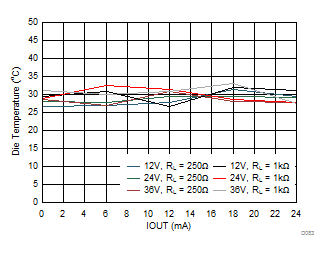 Figure 85. IOUT Die Temperature vs Load
Figure 85. IOUT Die Temperature vs Load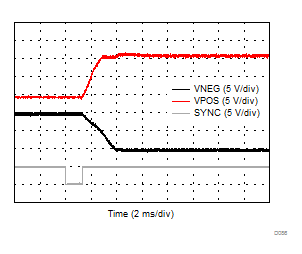 Figure 87. VOUT Enable VPOS and VNEG Settling Time
Figure 87. VOUT Enable VPOS and VNEG Settling Time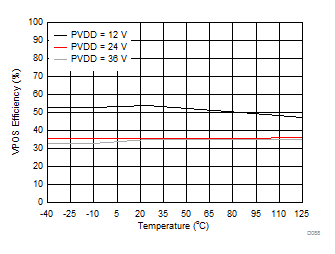 Figure 89. VOUT VPOS Efficiency vs Temperature
Figure 89. VOUT VPOS Efficiency vs Temperature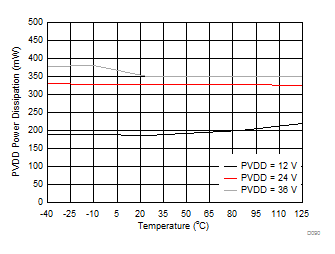 Figure 91. VOUT Power Dissipation vs Temperature
Figure 91. VOUT Power Dissipation vs Temperature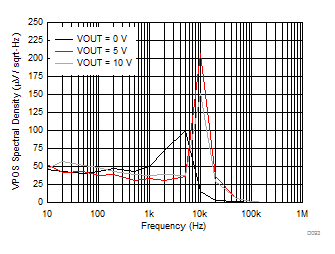 Figure 93. VOUT VPOS Noise Spectral Density
Figure 93. VOUT VPOS Noise Spectral Density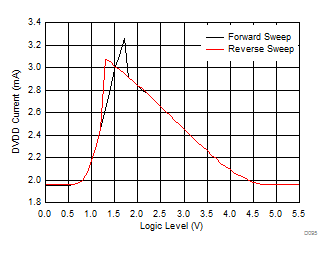 Figure 95. DVDD Iq vs Logic Level
Figure 95. DVDD Iq vs Logic Level